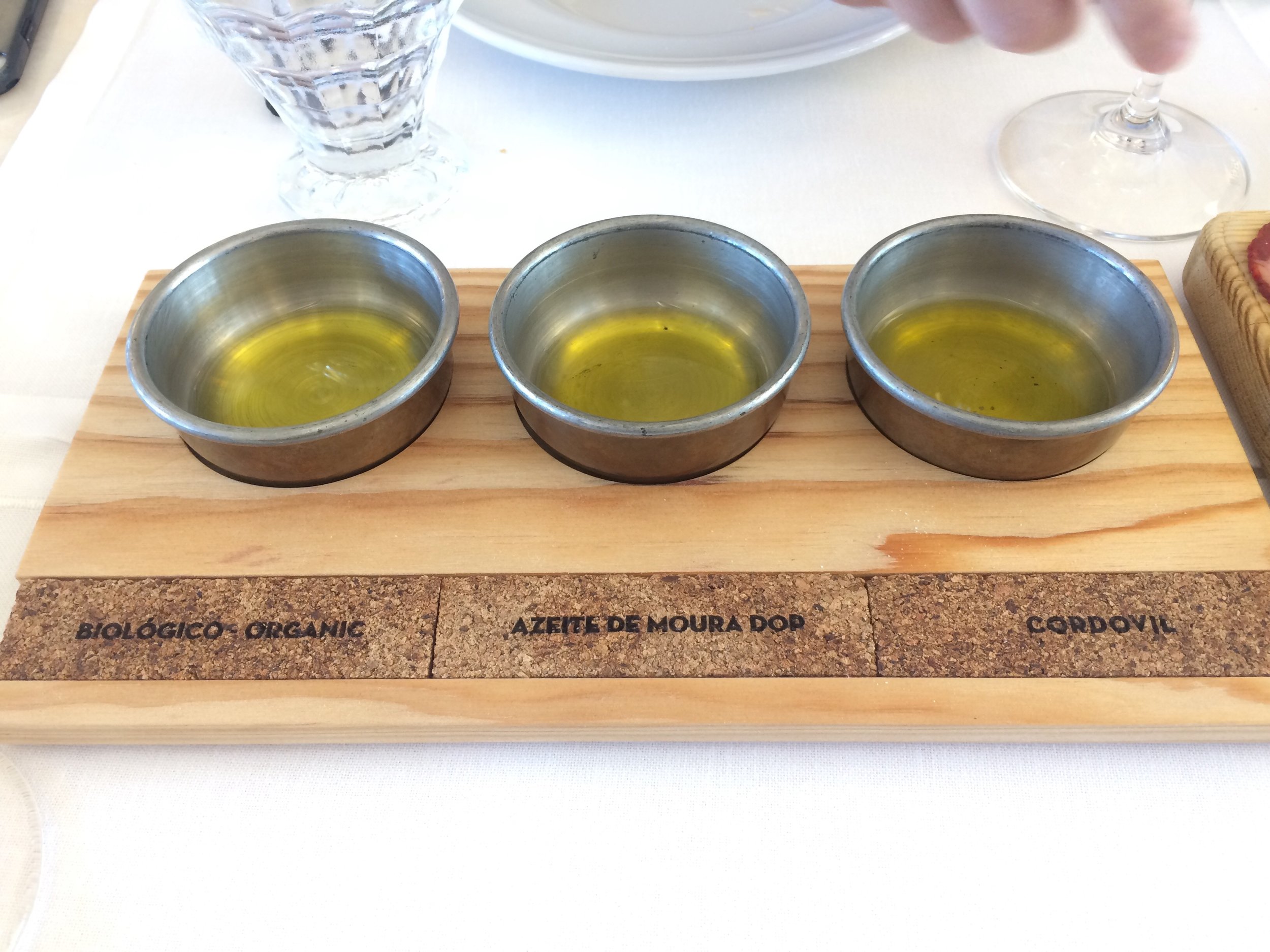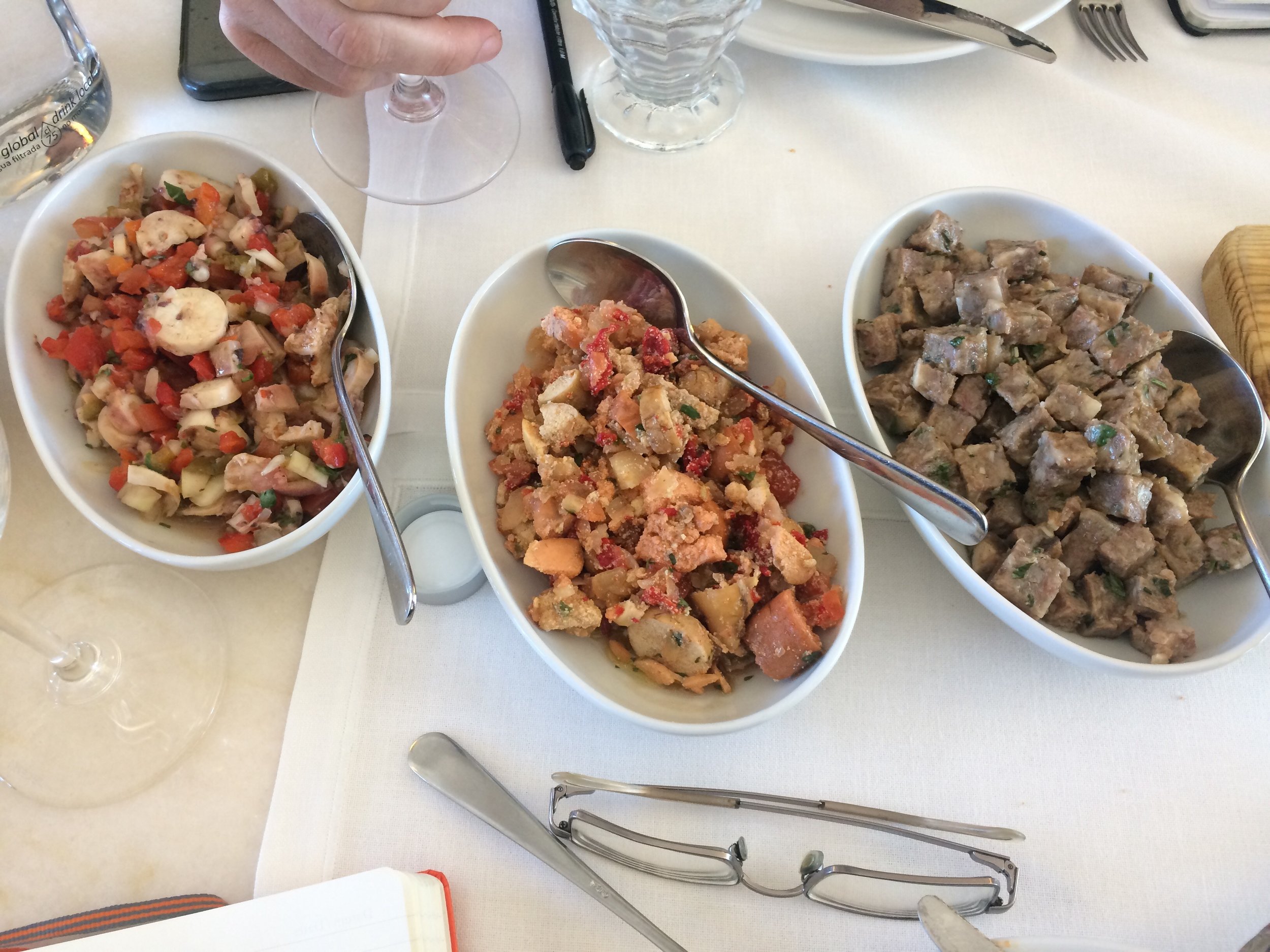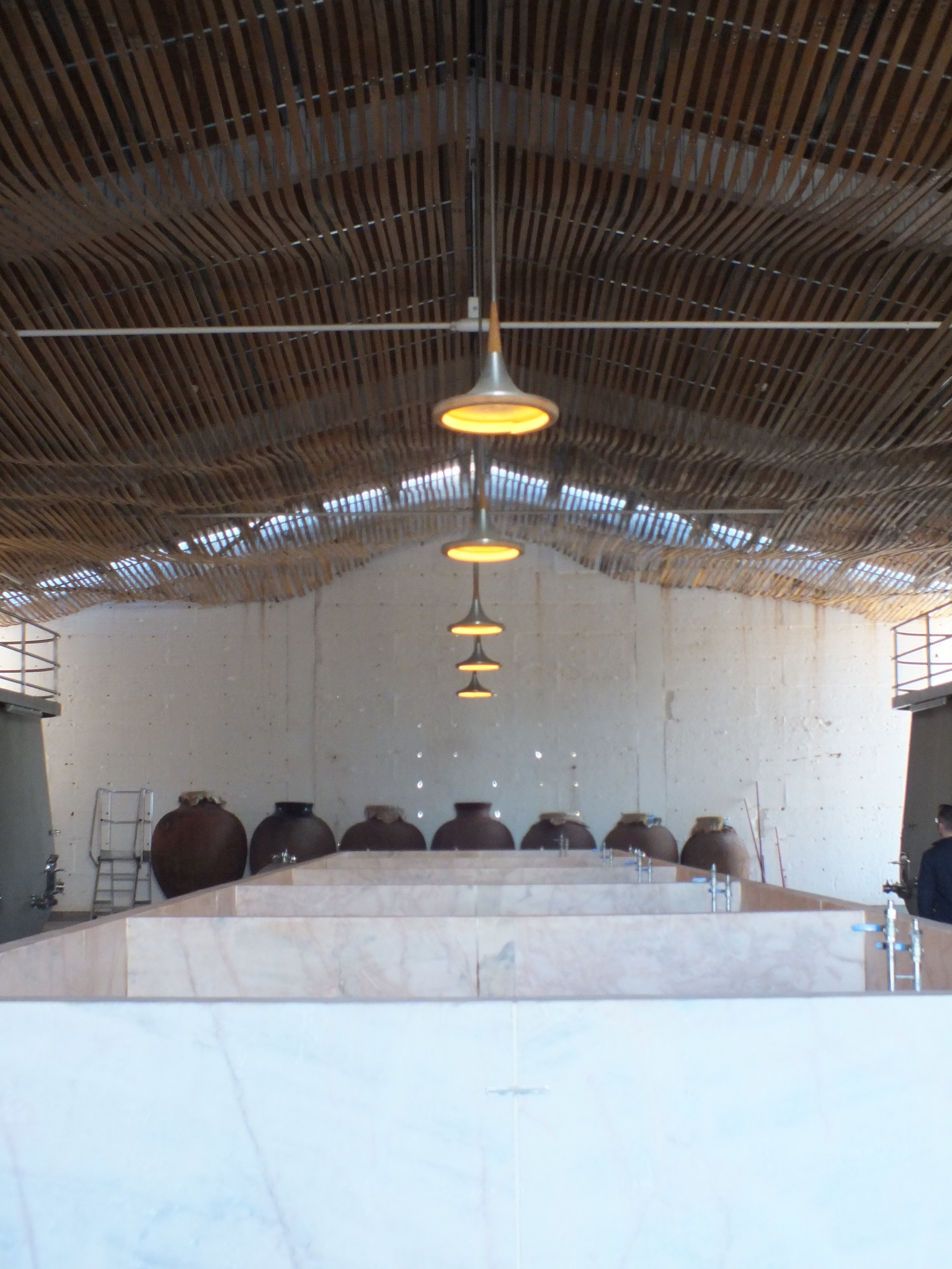It is fall in Alentejo, the light of the morning sun is cool, vivid and blindingly bright. Causing one to squint as one looks over the horizon. A horizon divided by sky blue and the earth shades of olive green and vines.
Alentejo photo by Christopher Sealy
Alentejo at Esporão. photo by Christopher Sealy
We, I, am in Rueguengos a subregion of the Alentejo, not far from the historical city of Evora. The landscape is familiar, I've been here before, a few years back in time, exploring the wine regions of Vidiguera and to the far north Portalegre. It is beautiful here. Raw, earth, herbs, vines and sky for miles and miles. Today the 6 of us are visiting the Herdade do Esporão. Esporão is one of the pioneering wineries of the Alentejo, pioneers in the sense that the Herdade was a creative vision of the impresario José Roquette and Joaquim Bandeira. Roquette wanted to establish a 'chateau' in the Alentejo, a winery = Herdade, that would be known for quality. In 1972 the Esporão Tower and some 250 hectares of land were acquired. Yet there was still a significant hurdle to overcome as much of this area was occupied by farmers. Farmers who in a post dictatorship era were very much against the notion of surrendering land to raise vines, the idea was ludicrous. It was only in 1980's that a shift in mentality and direction was achieved, with a co-operative plan to rebuild vineyards and restore the land that the Herdade do Esporão project was now able to gather momentum. The vision included wine, olive groves and cork production. In 1985, the first winery was built, and it is here from which I gather my thoughts and memories.
Herdade do Esporão today produces about 15 million bottles of wine. Yes quite significant but key to understanding the potential and scale of what Alentejo and Portugal is capable of. The first brands to hit the market where the Esporão Reserve White and Red. The success of these wines was such that in the 1990's the company expanded into 3 tiers of production, which included the construction of 2 additional wineries. A second facility for white wines, a third for the top level wines and the expansion of the original home winery for the original reserve brands. The wines were present in 47 markets with 40% of consumption in Portugal and with the farmers included in the success grower contracts were re-established and Esporão was acclaimed a successful business model. The success is a combination of vision, quality and consistency which the Wines of Portugal needed in order to establish a foothold in the World Wine Market. You aren't going to find quirky, sommelier geek out wines here. You will find wines of benchmark production standards, precision that represent a necessary dimension of the Wines of Alentejo.
David Baverstock, Chief Wine Maker presiding over the tasting.
Sandra Alves, Wine Maker.
The core brands of Esporão. Each vintage the label of Esporão Reserve White and Red is commissioned to a noted Portuguese artist/painter. Here the work of Pedro A.H. Paixão
FACT FILE
- Herdade = large winery/farm
- Monte = small winery/farm
- Quinta (a term used in the north and primarily the Douro = the classic term for a winery that was obliged to surrender 1/5, a Quinta, of the production to the monarchy.
- Herdade do Esporão sources grapes from the entire Alentejo. Particularly from the high altitude north sub region of Portalegre down to Reguengos.
- 7 different soil types contribute to the complexity of the wines.
- Production is 70% Red wine and 30% White wine.
- Red Grapes farmed : Aragonês (aka Tempranillo, Tinto Roriz as it is called in the North), Touriga Nacional, Syrah, Cabernet Sauvignon and Trincadeira
- White Grapes farmed : Antão Vaz, Verdelho, Semillon (imported by David who happens to be Australian)
- David Baverstock, Chief Wine Maker has been with Esporão since 1982. He had come to Portugal to work with Symington's in the Douro in 1980. Prior that that he had spent time in France with LaPierre in Morgon, Beaujolais and some time in Germany.
IN THE TASTING ROOM
WHITEs
2015 Monte Velho White : a wine comprised of Antão Vaz, Roupeiro and Perrum offering up initial aromas of apple, pear with white orchard blossom perfume that borders on sweet yet remains bright and fresh. To taste the Branco it is rich yet tense, with green apple to dry peach and other stone fruit flavours. This is a wine with nice balance full and texture.
2015 Verdelho : at it's origin this Verdelho comes from the island of Madeira and it exists for the simple reason that the grape was isolated on the island during the era of the vine disease Phylloxera that devastated the mainland vineyards of Europe. At present we see more frequent use, though it is quite low yielding. It was in 2001 that Esporão started to plant the Verdelho. I would say that the wine is quite unique and interesting with an aromatic intensity that is of waxy green and gold apple, fresh pear combined with citrus moving to herbal light celery and anise like tones. On the palate the wine is quite dry, very dry with some clean and crisp apple, citrus and spiced flavours, think white pepper to jasmine. Quite direct and subtle in complexity.
2015 Esporão Reserve White : the blend here is mainly Antão Vaz, Roupeiro with Arinto and several other white varieties in the mix. The wine is fermented in 60% tank and 40% new oak with a further 6 months on fine lees. The resulting wine is full, with fruity citrus to white tropical fruit aroma over subtle wood spice and vanilla. I'm finding a familiar savoury and herbed aroma. The palate gives way to richer flavours on the palate, with a touch of texture. The wine is warm with big fruit and gentle spice with a pleasant finish.
REDs
2015 Monte Velho Red : to make the 5million bottles of this wine, 20 different farmers contribute to the blend of Aragonês, Trincadeira, Touriga Nacional and Syrah. The result is quite clear, with a simple wine of cherry and red berry aroma and flavour, the fruit is fresh and not jammy better yet it is bright and clean. A very easy going wine with little cosmetics and no fuss.
2013 Esporão Reserve Red : the perennial classic from the Herdade based on the grapes Aragonês, Trincadeira, Cabernet Sauvignon and Alicante Bouchet. This wine is a cuvée with each grape fermented separately in tank, blended then matured 12 month in barrel - some new and some used. Here we have rich fruit aroma, dark berry, black currant with spice re: saffron, vanilla, the nose remains fresh and does not move into the cooked fruit territory as one would think with the heat of Alentejo and the 'use' of barrel. The palate deepens with more dark blue and black fruit and gentle herbed tones. This wine is upfront and firm in tannin. A solid example of the craft at Esporão.
A few other wines that are of real interest which I enjoyed over lunch are pictured below.
The Trincadeira to which I never say never was vibrant and fresh / the Moreto is the Amphora raised wines from vessels dating back to 1848, a new project for Esporão / AB - Alicante Bouchet was a big full bodied pleasing wines, call it Grenache on steroids.















